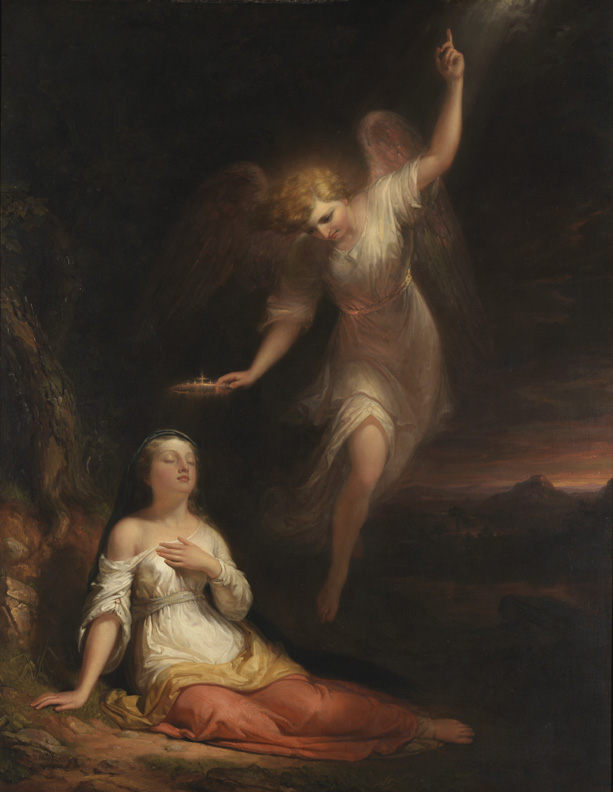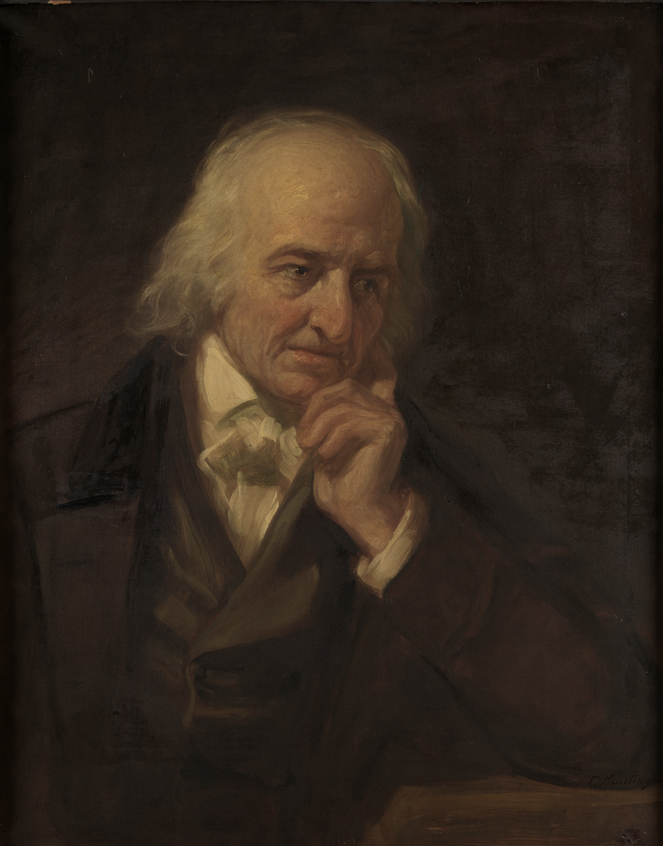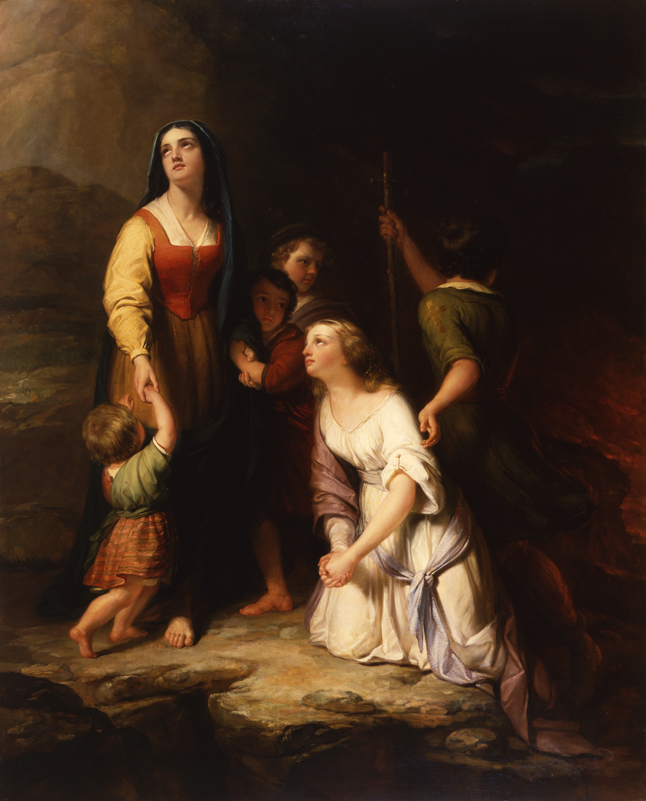
Mercy's Dream
Daniel Huntington
"Mercy's Dream" was the first great success of Daniel Huntington's career. In its large scale, the painting utilized the vocabulary of the old masters that Huntington had seen while studying in Europe. The sweetness of the figure of Mercy is reminiscent of a Raphael Madonna, while the elegant curve of the angel's body and upraised hand recall the 'figura serpentinata' of Michelangelo. The subject matter, however, was one that held strong appeal for an American audience: John Bunyan's "The Pilgrim's Progress," the epic religious allegory of the seventeenth century that was the best-selling book in the United States in the eighteenth and early nineteenth centuries, after the Bible.
In Part II, the character of Mercy experiences a dream that inspires her fellow pilgrims to continue their quest. Alone and downcast, Mercy is comforted by an angel, who blesses her, adorns her in jewelry, and transports her to a golden gateway, where she is brought into the presence of God. Huntington's composition closely follows the narrative, from Mercy's sumptuous clothes to the crown the angel bestows upon her. This vision of salvation struck a chord with the public, appearing as a popular print. Huntington made three other versions of the subject.
Artist
Date of Birth
(1816-1906)
Date
1841
Medium
Oil on canvas
Dimensions
84 1/2 x 66 1/2 in. (214.6 x 168.9 cm.)
Accession #
1879.8.10
Credit Line
Bequest of Henry C. Carey (The Carey Collection)
Copyright
No known copyright restrictions
Category
Subject
Collection
We're so excited you're planning to visit PAFA!
Make time for art — visit us Thursday to Sunday.
Before reserving your tickets, please review helpful information about museum hours, accessibility, building access, and special admission programs.
If you have any questions, feel free to reach out to us at visitorservices@pafa.org — we’d love to help!


